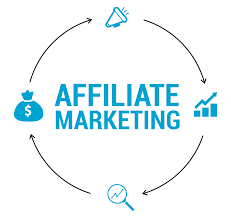You are here because you are looking for ways to make money with LinkedIn. You are right. LinkedIn is a high ticket social network. The average money spent of its users is higher that any of the other social networks.
In general, people make money online through LinkedIn by offering consulting services or through affiliate marketing.
Yet, You can use other ways. If you are interested to know them, keep reading.
Preparing your profile

Before thinking about monetizing your LinkedIn profile, ask yourself. Is it ready or no? To prepare your LinkedIn profile for monetization, a series of steps must be followed .
Ensure that you have a professional and clear banner, an engaging headline. Don’t forget to add a comprehensive summary and detailed work experience.
Get recommendations from professional associates to foster trust.
Be active on the social network. Share regulary relevant and engaging content to your target audience.
To consistently monetize your LinkedIn, it’s crucial to analyze the impact of your content creation . Look at the engagement rates of your LinkedIn posts, the growth of your connections and feedback received. These data points will help you optimize your approach and ensure you’re reaching the right audience.
Use LinkedIn’s built-in analytics tools without moderation. By analyzing these metrics, you can refine your strategy, improve engagement and increase your earning potential.
Consistency is key here.
Lastly, enhance your outreach and visibility by participating in LinkedIn groups related to your field.
These actions will transform your LinkedIn profile into a captivating professional landing page. Setting a solid foundation for successful monetization is key.
Strategies to make money on LinkedIn

Monetizing LinkedIn Audience Through Consulting Services
So far, LinkedIn is the only know professional social network. It provides a goldmine of opportunities for individuals and businesses alike. Many entrepreneurs and professionals have started to leverage LinkedIn to monetize their expertise.
One common way to make money as a creator is through consulting services. As a consultant, your LinkedIn profile becomes your virtual billboard.
It showcases your niche expertise and unique value proposition. This platform makes it easy to connect with others and forge meaningful connections. It is suitable to promote your consulting services to a wide array of prospects.
An effective way to increase the reach of your consulting services is by leveraging LinkedIn groups. By joining groups that align with your niche, you can engage with potential clients and showcase your expertise. It’s also important to respond to connection requests and messages . Each interaction might be a potential consulting opportunity.
Make bold statements that you are open for consulting in your LinkedIn content. As a call to action in your content, state that you are open for consulting opportunities.
Also, make it possible for people to schedule calls with you easily. Usually, the first call is free. But if your audience is ready to pay, don’t hesitate to add this option.
Regularly posting content on LinkedIn not only helps build your brand but also positions you as an authority in your field. The goal is to increase visibility and engagement. As you connect with more people on the platform, monetizing through consulting services becomes more tangible.
”
Don’t find customers for your products, find products for your customers.” – Seth Godin
Monetizing LinkedIn Audience Through Sponsored Posts
Sponsored posts are another effective way to monetize your LinkedIn. This form of direct monetization involves collaborating with brands and businesses. They need to align with your profile and audience. The concept is simple. You create content that promotes a product or service. The brand pays you for this promotion and the audience sees an organic post in their feed.
One way of doing this is by stating a problem. The next step is to show how the product solves the problem.
When using the platform for sponsored posts, state that you are paid to write your post. The common practice is to do it at the end of your posts.
If you are a freelancer for example, you can talk about an accounting software that you are using.
To generate significant income through sponsored posts, you need a large and engaged LinkedIn audience . Brands will be more inclined to sponsor your posts if they can see a tangible return on their investment. They want clicks, likes, post shares, or conversions. Anything that will make people see them and make business.
When it comes to sponsored posts, maintaining the trust and respect of your LinkedIn connections is crucial. Always ensure that the product or service you’re promoting aligns with your personal brand and your authority. The last thing you want is to alienate your audience with irrelevant promotional content.
Be careful with this strategy. Don’t post sponsored content on a regular basis. It’s important to find a good balance between sponsored content and non-promotional content. Focus on value-adding posts to keep your audience engaged and maintain authenticity.
Monetizing Your LinkedIn Audience Through Affiliate Marketing

Affiliate marketing is another common way. It involves promoting a product or service from an affiliate partner. You earn a commission on any sales made through your referral link. It is another method that allows you to make money on LinkedIn without having to create or sell your own product.
Your LinkedIn posts serve as the platform for your affiliate marketing efforts. In these posts, you may find affiliate links to the products or services you’re promoting. The trick is to weave these links into your content, providing value to your audience while subtly encouraging them to buy.
Just like with sponsored posts, you’ll need to be cautious about preserving your credibility with your LinkedIn connections while promoting affiliate products. Always choose products that align with your personal brand and offer real value to your audience. Also, don’t spam your users with content with affiliate links.
For example, if you’re a digital marketing expert, promoting an email marketing tool or a copy-writing course would be fitting.
Another common way is to promote links to tools you use.
It is different from sponsored posts. You don’t get paid for the post. Instead, it is the conversions through the link that usually pay.
LinkedIn groups can again serve as an excellent platform for affiliate marketing. Engaging with group members and sharing your knowledge can help build trust, making them more likely to consider your product recommendations.
Monetizing LinkedIn Audience through Newsletters
As a professional network, LinkedIn is a perfect platform for sharing newsletters. Newsletters can help you connect with your LinkedIn audience on a deeper level.
They give you control of your audience too.
They provide readers with insights, tips, and information that add value to their professional lives.
First, you need to build an email list. Usually, creators add a call to action to ask people to join their newsletters. Then, you need to choose a frequency of publication. 1 week, 2 weeks, monthly… This consistent communication helps build a relationship with your audience turning your LinkedIn connections into loyal subscribers.
Newsletters can be monetized in several ways. You can choose to run a subscription-based newsletter, where subscribers pay a small fee to receive your content. You could include sponsored content or affiliate links within your newsletters. With the right strategy, newsletters can be an effective way to monetize your LinkedIn profile.
Remember, the key to successful newsletter monetization is providing value. Whether you’re sharing industry news, practical advice, or personal insights, your content should be something your subscribers look forward to reading.
Promoting Your Own Products

LinkedIn also offers a great opportunity to promote your own products. If you’re a business owner, it is a perfect platform to showcase your products to a professional audience.
Whether you’re selling physical goods, digital products, or information products, LinkedIn can help you reach your target market. With the right strategy, you can use it to drive traffic to your online store, boost product awareness, and ultimately increase sales.
As always, the key to product promotion on LinkedIn lies in creating engaging, informative, and value-adding content. Don’t share a product photo and a link to your online store. Instead, create content that educates your audience about the product. It is important to show them how it can solve a problem they have, and invites them to learn more. Telling a personal story about the reasons behind creating this product can be in your favor.
Remember, your ultimate goal is not to make a sale, but to build a loyal customer base. This requires not only excellent products, but also excellent customer service. Always respond to comments, messages, and inquiries promptly and professionally.
Job Recruitment
As a professional and job-focused platform, LinkedIn offers unique opportunities to make money through job recruitment. If you have a large network of professional connections, you can leverage this network to fill job vacancies and earn recruitment fees. There is a large chance that you have job hunters in your followers.
To monetize through job recruitment, you first need to connect with companies looking to hire. These could be companies within your industry, or recruitment agencies. Once you’ve established a relationship with them, you can start referring candidates from your LinkedIn network for their job openings.
Every time a candidate you referred gets hired, you earn a recruitment fee. This could be a flat fee, or a percentage of the candidate’s first-year salary.
Job search is tough. You can take advantage of it.
For example, if you work in web development, you could offer your audience from time to time jobs opportunities with hiring companies.
Paid Comments
This strategy is quiet unusual and obscure. To this moment, we didn’t see anyone on LinkedIn talking about it.
Paid comments represent another intriguing way to monetize LinkedIn. This method involves brands or people paying you to engage with their content. This will make them visible to your audience. It will stimulate discussion among your connections.
Businesses understand the value of engagement on LinkedIn. Comments are one of the most powerful forms of engagement. A post with lots of comments will be more likely to appear in the feeds of users outside of the original poster’s immediate network, expanding its reach.
As such, brands are often willing to pay influencers and users with large networks to comment on their posts, sparking discussions that can help the post gain traction.
If you have a large and active LinkedIn network, you may be able to monetize through paid comments. Yet, it’s important to only engage with and promote content that aligns with your personal brand and values.
Webinars

A common way to monetize your followers is through Webinars. They represent an effective way to monetize your LinkedIn audience. A webinar is an online seminar or presentation, often used to educate an audience on a specific topic, promote a product or service.
Through LinkedIn, you can promote your webinars to your professional network. Whether you’re a business coach offering a webinar on effective marketing strategies, or a tech company demonstrating a new product, LinkedIn provides a platform to attract attendees and drive sign-ups.
You can monetize webinars in several ways. You could charge an entry fee for your webinar. You could offer it for free and then up-sell a product or service during or after the event. You could also secure sponsorship for your webinar, or use it as a lead generation tool, capturing attendees’ contact information for future marketing efforts.
Using LinkedIn to promote your webinars allows you to leverage your professional network and reach a large, relevant audience. By providing valuable content in your webinar, you can build your brand and authority while also generating income.

